Why Customer Retention Rate is Important?
An effective customer retention strategy plays a crucial role in improving conversion rates. Learn why customer retention is so important for your...
Learn everything you need to know about social shopping. Discover how to leverage social media platforms for e-commerce and drive sales
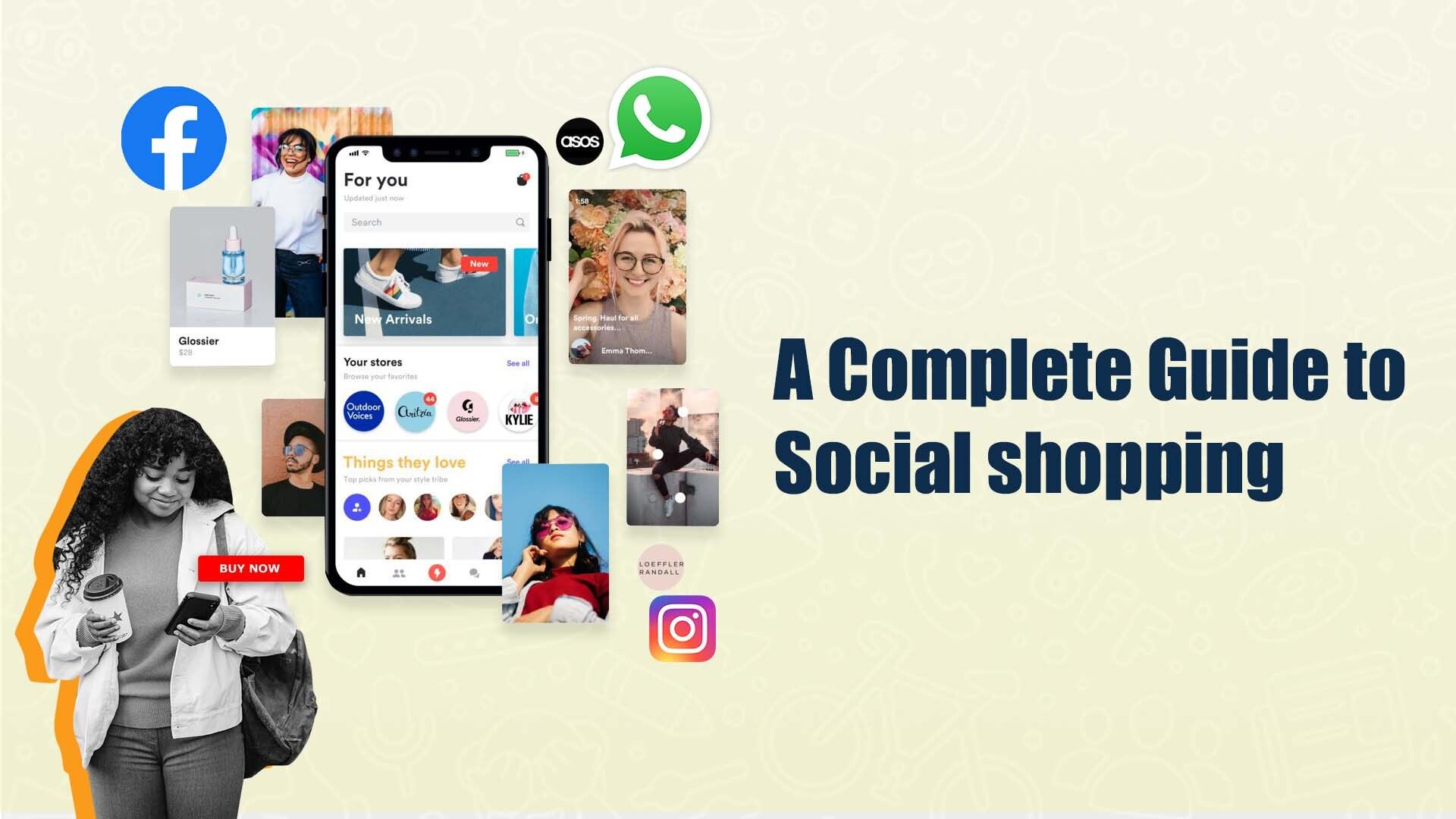
People usually talk about their experiences with a brand in conversations.
And with social media on the rise, consumers have started to use it as a medium to research products they want to purchase and review them post-purchase.
Reports found that consumer reviews have a 74% increase in product conversion.
With people spending more and more time on social media, it is no surprise that people prefer to shop from social media.
Businesses, today, have been using social media as an integral part of their revenue generation strategy.
Social shopping is the new ecommerce revolution that allows brands to convert their content on social media. A Gartner report found that almost 66% of brands had tried out the social shopping feature in the past year.
Social shopping can be defined as the combination of social media and ecommerce. Brands tag products to their social content that allow customers to shop directly from the post.
Content published on social media can have a significant impact on an individual’s buying behavior. A person’s buying decisions may also be influenced by their friend’s recommendations and reviews.
For instance, an influencer with 100k followers reviews a moisturizer on social media. This can have a sizeable impact on the brand’s conversion rates. Followers may take the influencer’s insights and reviews to purchase products from the same brand because they trust the review of the influencer.
Reports found that the social shopping market in the US will grow from $29.3 billion in 2020 to $84.2 billion in 2024, an annual growth rate of 24%.
Read more Facebook Chatbot: Best Examples & Use Cases
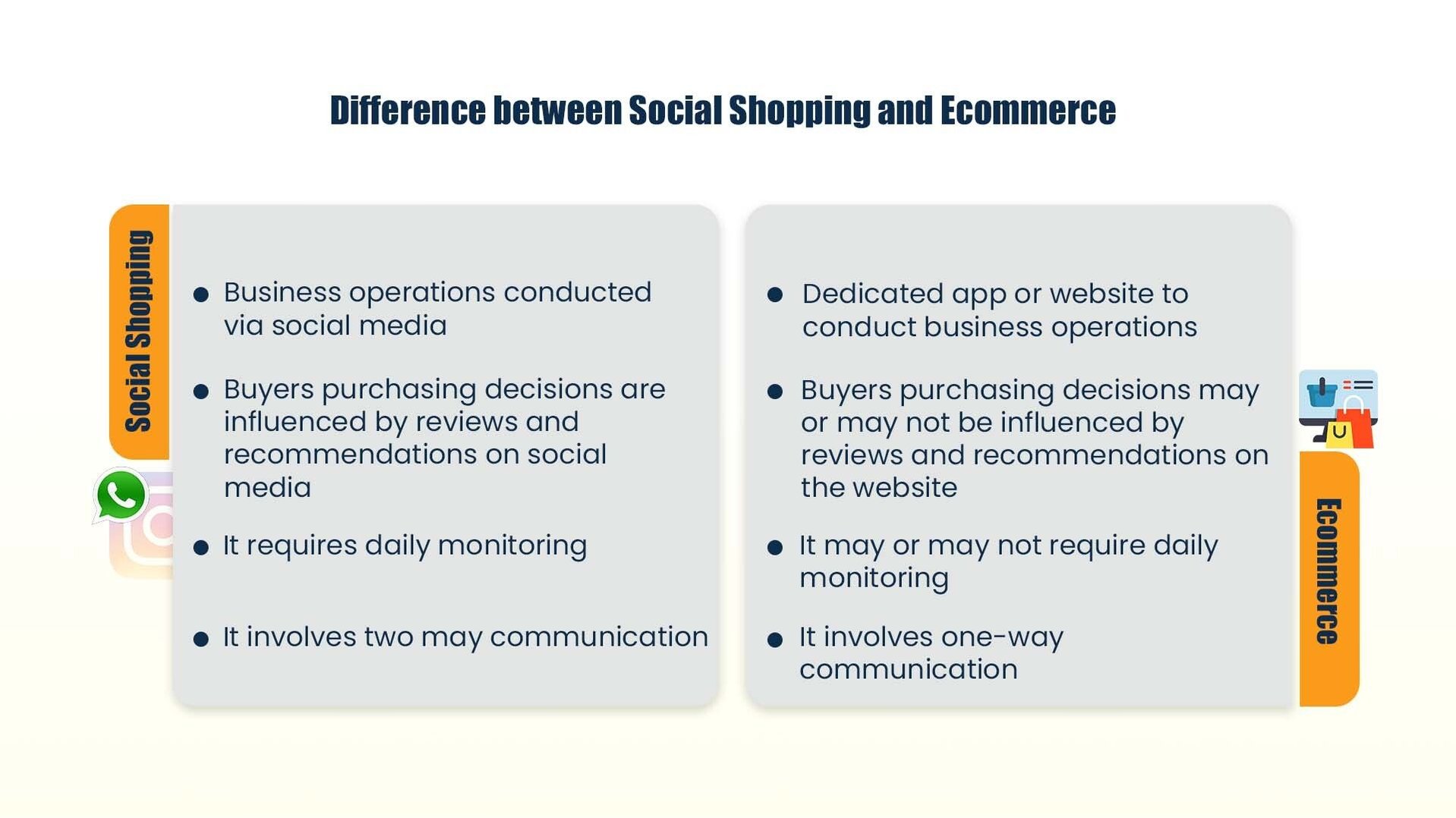
A social shopping experience occurs when shoppers begin their journey on social media to browse, shop and pay directly on the app. The social shopping experience taps into the power of people and community while weaving the shopper’s experience into their everyday lives.
For instance, you are exploring autumn collection (#autumncollection) on Instagram. As you scroll, you will find several posts that you like. Maybe pictures of sweaters your favorite creators are wearing. Wouldn't it be wonderful if you could buy the same sweater as the influencer is wearing? With social commerce, it is possible to buy the sweater immediately using “tag a product” option. Shoppers can click on the tagged product and complete their purchase directly via Instagram.
While powering your social shopping experience, you must consider an interesting statistic about modern consumers. Majority of consumers (74%) rely on social media for information about how a product looks or performs. Now that we know what social media can do for a brand, lets explore its benefits.
Having your products tagged with your content on social media opens up a range of opportunities.
Shoppers discover new brands as and when they go using hashtags, posts, shop tabs, and more.
Hence, using social shopping as a part of your content marketing strategy can help you generate revenue from the content you post.
A report found that AOV for customers referred from Instagram is $65, followed by Facebook at $55, Twitter at $46, and YouTube at $38.
Social media is an excellent way to capture leads. It offers advanced tools to advertise your products to your targeted audience.
However, it is crucial to ascertain your advertising objectives.
✅Do you want to drive traffic to your website?
✅Do you want to promote a specific product range?
✅Do you want to capture potential leads?
✅Is there any other objective that requires your attention?
A great way to use advertising is to use Click to WhatsApp ads on Facebook. You can use these ads to capture potential customers.
Once your customer sends the pre-typed message, you can immediately capture their phone number. You can engage and incentivize the customer to complete their purchase through discount coupons, personalized offers directly via WhatsApp.
All your social channels must be well equipped to complete a transaction. This means that buyers should be able to purchase directly via the app of their choice.
Ensuring a seamless purchasing experience by adding product discovery, recommendations, and payment integrations can help you maximize your sales through social shopping.
Vizury’s conversational commerce solution allows your business to use messaging apps for revenue generation. You can build conversational flows, store your data and create actionable segments of users based on demographics, behavior, and intent.
Research indicates that shoppers tend to spend more if their shopping experience is more exclusive and personalized.
One of the best ways to personalize your customer experience is to use conversational AI in your social channels. The AI analyzes the user’s intent and behavior and delivers a response that is catered to the shopper’s needs.
You can also use it to send promotional messages, offers, and discounts to incentivize them to purchase.
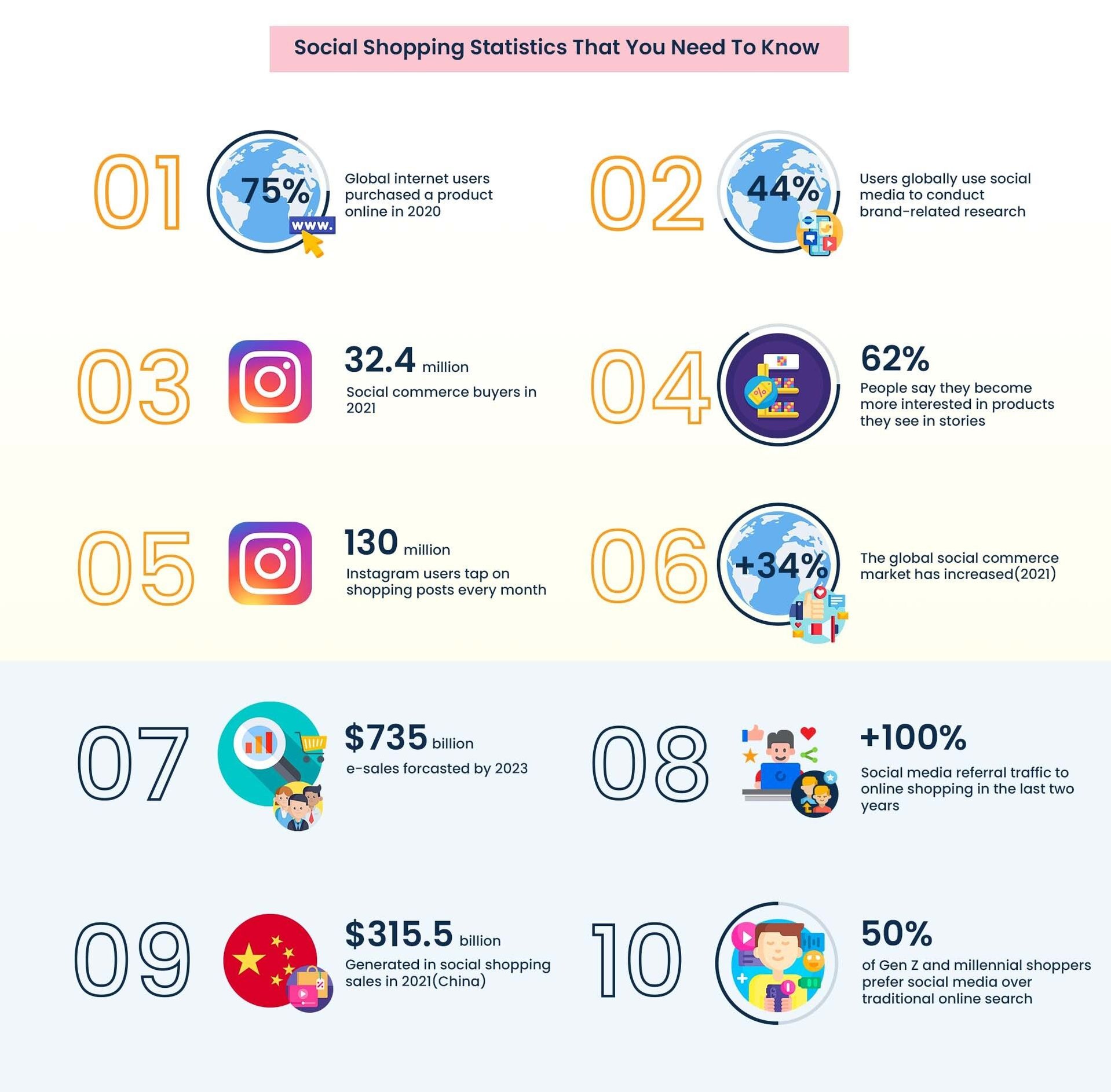
Here are some brands that are using social media to create content as well as sell from their catalogs.
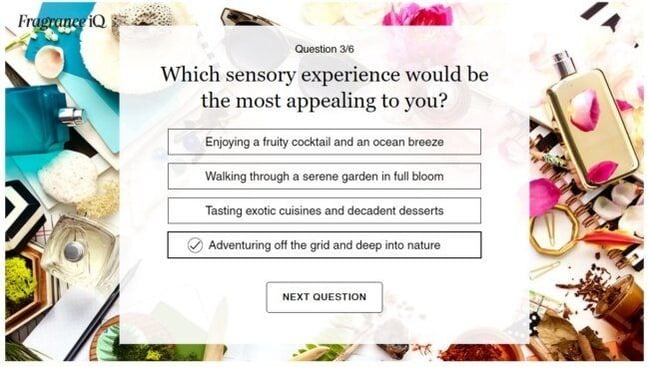
Popular beauty brand Sephora rolled out the "Fragrance IQ" quiz to personalize their shopper's experience. The quiz has a series of questions that helps determine the ideal perfume for the buyer.
After the buyer finishes the quiz, products are recommended based on their preferences. This is an excellent way to keep the buyer engaged as well as personalize their experience.
They also use social media to offer expert help to their buyers using Instagram DMs, Messenger as well as their website.
The brand creates digital experiences that makes it easier for buyers to make a purchase decision. This ultimately helps them drive sales while personalizing a buyer's experience.
Read more Instagram Chatbot: Use Cases and Examples
Instead of listing all its products, Target has developed a shop that aligns with its Instagram content strategy. All posts are connected to their Instagram shop where visitors can seamlessly click and purchase products directly via the app.
This has created an excellent browsing experience for shoppers. In case they like a product, they can purchase it by tapping into the shop button on the post.
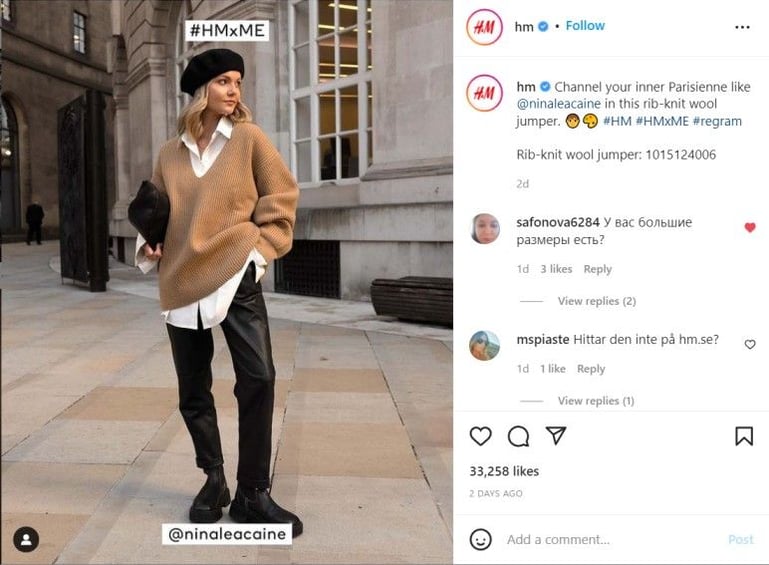
Popular fashion retail brand, H&M has over 37.9M on Instagram. H&M uses Instagram shops to showcase its products and sell via the app.
Their content is mostly based on giving fashion recommendations and suggesting outfits. These outfits are then connected to their product catalog to offer viewers an option to purchase if they like the outfit.
Shopping on social media is the new and improved way of digital shopping. At present four social networks are driving the social commerce space - Facebook, Instagram, Twitter and Pinterest. In recent years, WhatsApp is also growing popular in powering social commerce. Although brands cannot run ads on WhatsApp, it is still a powerful channel for one on one conversations.
All channels can benefit your business to grow sales. It is crucial for brands to leverage social shopping as it:
Social media is a great place for brands to build a community and acquire customers. It's all about making the shopper’s journey seamless. Shoppers can browse, shop, and pay on the go.
Social channels not only help brand’s sell products but also gives a space to create relatable content that explains how to use the product. In addition, users can review, and comment on your brand’s post. It inspires discussion about your products and stimulates conversations among new viewers.
Shoppers love convenience. And to shop from an app that we use on a daily basis is arguably the best thing that can happen to shoppers. Its no surprise that Genz and millennials use social media as primary channels. A report found that 75% of Gen Z users in the U.S. are influenced by social ads in their purchasing decisions. Offering a seamless shopping experience on apps they already love is a great way to convince customers to shop online.
It can also help increase your average order value when you can send dynamic product recommendations conversationally based on shoppers history, what they have viewed or what their friends have shopped for. Social media holds the power to influence users to spend more because you can leverage customer information to deliver exceptional experiences.
Another benefit of social shopping is that it can help you drive customer loyalty and retention. Let's take an example. An existing customer enquires about a dress and asks whether the dress is available in size 8. Your conversational AI bot can engage with the customer, answer the customer's query and help complete the purchase. The bot can further engage with the customer about their delivery experience and send new product alerts. This can help build and maintain relationships with customers and drive customer loyalty.
Modern consumers expect brands to know what they are looking for. One of the advantages of leveraging social media is being able to collect invaluable customer data to personalize the shopper’s experience. Brands can build robust customer profiles that can be used to recommend products and deliver relevant content based on shoppers’ interests.
Although it has been around for nearly a decade, trends have come and gone over the years. Celebrity endorsements were popular but recent trends dictate that micro-influencers are more influential. It is mainly because most customers don’t relate with a celebrity as much as they do with an influencer.
In addition, videos have been found to become more popular than images. It makes it easy to demonstrate how to use a product and display how it fits in our day-to-day lives. Human attention span is around 8 secs and with 30-sec videos growing in popularity, videos need to be short, crisp, and to the point. Videos are worth it. In fact, 84% of consumers felt convinced enough to buy a product after watching a video about it.
The Internet has changed the way people shop. In China, social shopping has taken an interesting turn by allowing viewers to shop while watching live streams. Live commerce is being adopted by many brands to promote and consistently engage with shoppers across channels. The market size of China's Live Stream E-commerce is at an estimated value of $161 billion in 2020.
Many brands outside of China have also been seen to adopt live commerce to sell products. In fact, Flipkart, a homegrown ecommerce brand is also found to bet big on live commerce. It has been found to actively conduct live shopping streams on its app in collaboration with influencers.
Consumers love convenience while shopping. Hence, Conversational AI chatbots are also on the rise as businesses adopt new ways of engaging with customers. With conversational commerce on the rise, shoppers now expect to receive offers, browse, shop, and pay on their most loved app. They can even reach brands 24/7 without having to wait for a response.
There is no doubt that social media has completely revolutionized how customers interact with brands. Hence, it is essential to be where your customers are and give them the opportunity to purchase products however they want to.
Social shopping provides a wide range of opportunities to explore. The question is are you creating content that converts?
An effective customer retention strategy plays a crucial role in improving conversion rates. Learn why customer retention is so important for your...
From recovering abandoned carts to processing transactions, it has become easier for brands to drive customer retention with technology. In this...
Discover how to boost customer loyalty with WhatsApp by leveraging real-time communication and personalized experiences.
Be the first to know about new B2B SaaS Marketing insights to build or refine your marketing function with the tools and knowledge of today’s industry.